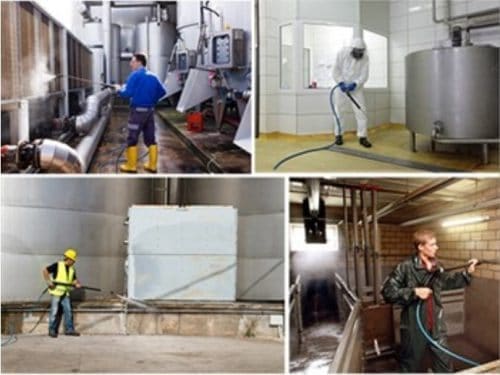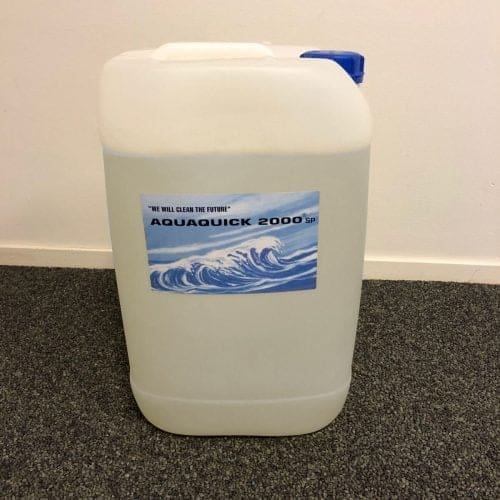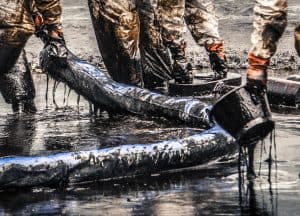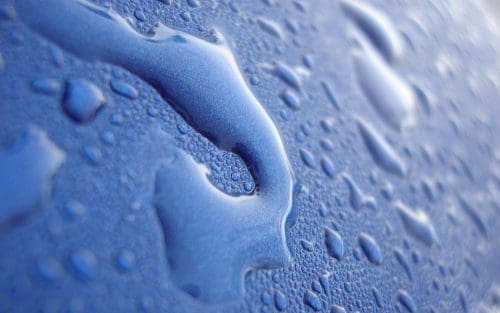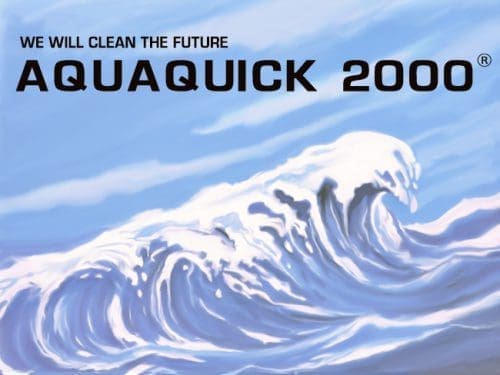Wprowadzenie
Odtłuszczacze do zbiorników oleju są niezbędne do utrzymania czystości i funkcjonalności różnego rodzaju zbiorników oleju. Niezależnie od tego, czy chodzi o środowisko przemysłowe, mieszkalne czy komercyjne, utrzymywanie zbiorników oleju w stanie wolnym od nagromadzonego tłuszczu ma kluczowe znaczenie dla bezpieczeństwa, wydajności i odpowiedzialności za środowisko. W tym kompleksowym przewodniku zagłębimy się we wszystko, co musisz wiedzieć o odtłuszczaczach do zbiorników oleju, od zrozumienia ich rodzajów i funkcji po wybór najbardziej odpowiedniej opcji dla twoich potrzeb.
Zrozumienie odtłuszczaczy do zbiorników oleju
Odtłuszczacze do zbiorników oleju to specjalistyczne środki czyszczące przeznaczone do rozkładania i usuwania smaru, oleju i innych zanieczyszczeń z powierzchni zbiorników oleju. Występują one w różnych formach, w tym na bazie rozpuszczalników, wody i biodegradowalnych, a każdy z nich ma swoje unikalne właściwości i zastosowania.
Rodzaje zbiorników oleju Odtłuszczacze
- Odtłuszczacze na bazie rozpuszczalników: Odtłuszczacze te zawierają silne rozpuszczalniki, które skutecznie rozpuszczają pozostałości smaru i oleju. Są one często stosowane w warunkach przemysłowych, gdzie wymagane jest intensywne czyszczenie. Mogą one jednak stanowić zagrożenie dla środowiska i zdrowia ze względu na swój skład chemiczny.
- Odtłuszczacze na bazie wody: Odtłuszczacze na bazie wody wykorzystują wodę jako główny rozpuszczalnik, wraz ze środkami powierzchniowo czynnymi i innymi dodatkami do emulgowania i usuwania smaru z powierzchni. Są one zazwyczaj bezpieczniejsze w użyciu i bardziej przyjazne dla środowiska niż alternatywy na bazie rozpuszczalników.
- Biodegradowalne środki odtłuszczające: Biodegradowalne środki odtłuszczające zawierają naturalne lub organiczne składniki, które szybko rozkładają się w środowisku bez powodowania szkód. Stanowią one przyjazną dla środowiska alternatywę dla tradycyjnych środków odtłuszczających, a jednocześnie zapewniają skuteczne czyszczenie.

Jak działają odtłuszczacze zbiorników oleju
Odtłuszczacze do zbiorników oleju działają poprzez penetrację warstw smaru i oleju na powierzchniach zbiorników, rozbijając je na mniejsze cząsteczki, które można łatwo usunąć. Odtłuszczacze na bazie rozpuszczalników rozpuszczają smar poprzez reakcje chemiczne, podczas gdy odtłuszczacze na bazie wody i biodegradowalne polegają na emulgowaniu, aby zawiesić smar w wodzie w celu łatwiejszego usunięcia.
Czynniki, które należy wziąć pod uwagę przy wyborze odtłuszczacza do zbiorników oleju
Przy wyborze odtłuszczacza do zbiorników oleju należy wziąć pod uwagę kilka czynników, aby zapewnić optymalną wydajność i bezpieczeństwo.
Rodzaj oleju i smaru
Różne oleje i smary mogą wymagać określonych rodzajów odtłuszczaczy do skutecznego czyszczenia. Przy wyborze odtłuszczacza należy wziąć pod uwagę lepkość i skład substancji obecnych w zbiorniku oleju.
Kompatybilność materiału zbiornika
Upewnij się, że wybrany środek odtłuszczający jest kompatybilny z materiałem zbiornika oleju, aby zapobiec jego uszkodzeniu lub korozji. Niektóre środki odtłuszczające mogą być zbyt agresywne dla niektórych materiałów, takich jak tworzywa sztuczne lub gumowe uszczelki.
Obawy dotyczące środowiska
Weź pod uwagę wpływ odtłuszczacza na środowisko, zwłaszcza jeśli pracujesz w obszarach wrażliwych lub musisz przestrzegać przepisów dotyczących ochrony środowiska. W miarę możliwości wybieraj opcje biodegradowalne lub przyjazne dla środowiska.
Środki ostrożności
Podczas pracy ze środkami do odtłuszczania zbiorników olejowych należy zawsze stawiać na bezpieczeństwo. Należy uważnie przeczytać i postępować zgodnie z instrukcjami producenta, używać odpowiedniego sprzętu ochronnego i przechowywać odtłuszczacz w bezpieczny sposób, aby zapobiec wypadkom lub narażeniu na działanie niebezpiecznych chemikaliów.
Skuteczność a koszty
Zrównoważ skuteczność odtłuszczacza z jego kosztem, aby zapewnić sobie najlepszą wartość inwestycji. Chociaż niektóre wysokowydajne odtłuszczacze mogą być droższe, w dłuższej perspektywie mogą zaoszczędzić czas i wysiłek, zapewniając doskonałe wyniki czyszczenia.
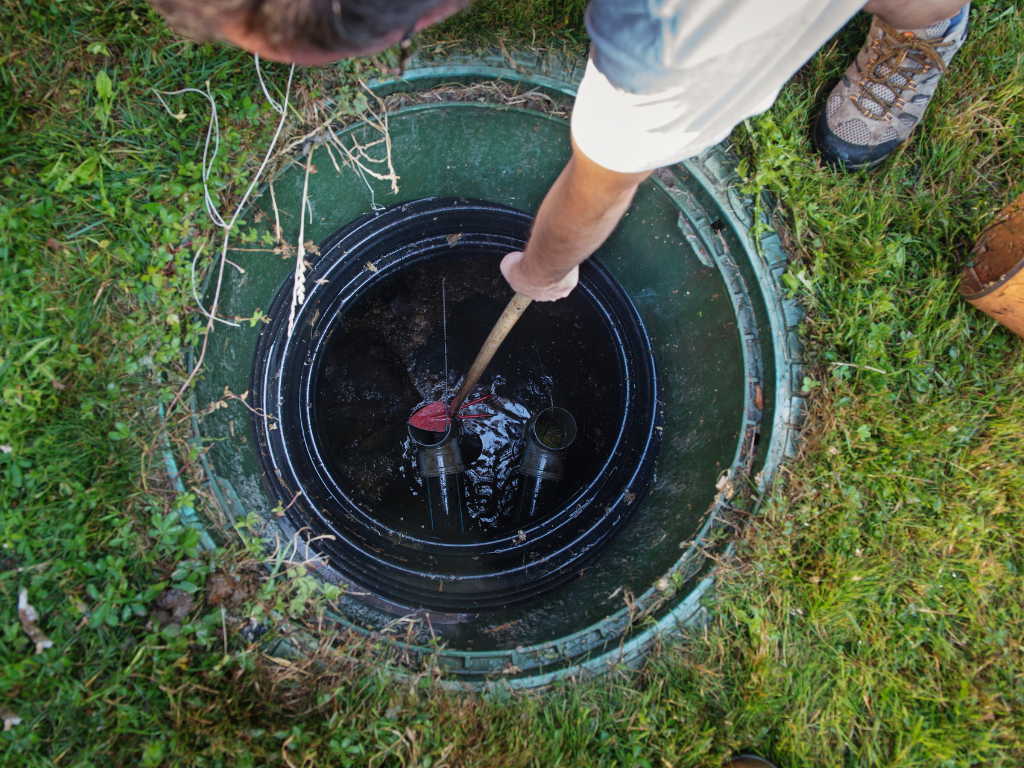
Najlepsze środki do odtłuszczania zbiorników oleju na rynku
Jeśli chodzi o wybór najlepszego środka do odtłuszczania zbiorników oleju, należy wziąć pod uwagę takie czynniki, jak skuteczność, bezpieczeństwo i wpływ na środowisko. Oto kilka najlepiej ocenianych środków do odtłuszczania zbiorników oleju dostępnych na rynku:
Odtłuszczacz rozpuszczalnikowy do ciężkich zastosowań
Cechy:
- Silna formuła rozpuszczalnika, która szybko rozbija uporczywe osady smaru i oleju.
- Odpowiedni do zastosowań przemysłowych i silnie zabrudzonych zbiorników.
Plusy:
- Skutecznie usuwa pozostałości smarów i olejów.
- Szybko działająca formuła skraca czas czyszczenia.
Wady:
- Zawiera agresywne chemikalia, które mogą stanowić zagrożenie dla zdrowia i środowiska.
- Wymaga ostrożnego obchodzenia się i utylizacji.
Koncentrat odtłuszczacza na bazie wody
Cechy:
- Formuła na bazie wody jest bezpieczna dla większości powierzchni, w tym metalu, plastiku i betonu.
- Skoncentrowaną formułę można rozcieńczyć, aby dostosować siłę czyszczenia.
Plusy:
- Przyjazny dla środowiska i biodegradowalny.
- Wszechstronna formuła odpowiednia do szerokiego zakresu zastosowań.
Wady:
- W przypadku silnie zabrudzonych zbiorników może wymagać dłuższego czasu działania lub kilku aplikacji.
- Mniej skuteczny w przypadku uporczywych osadów smaru w porównaniu z alternatywnymi środkami na bazie rozpuszczalników.
Naturalny odtłuszczacz do zbiorników olejowych Aquaquick
Cechy:
- Zawiera naturalne, biodegradowalne składniki, które są bezpieczne dla środowiska i użytkownika.
- Skutecznie usuwa tłuszcz i olej bez konieczności stosowania agresywnych środków chemicznych.
Plusy:
- Ekologiczna i nietoksyczna formuła.
- Delikatny dla powierzchni zbiornika, a jednocześnie zapewniający skuteczne czyszczenie.
Wady:
- Może wymagać nieco dłuższego czasu działania w porównaniu do odtłuszczaczy na bazie rozpuszczalników.
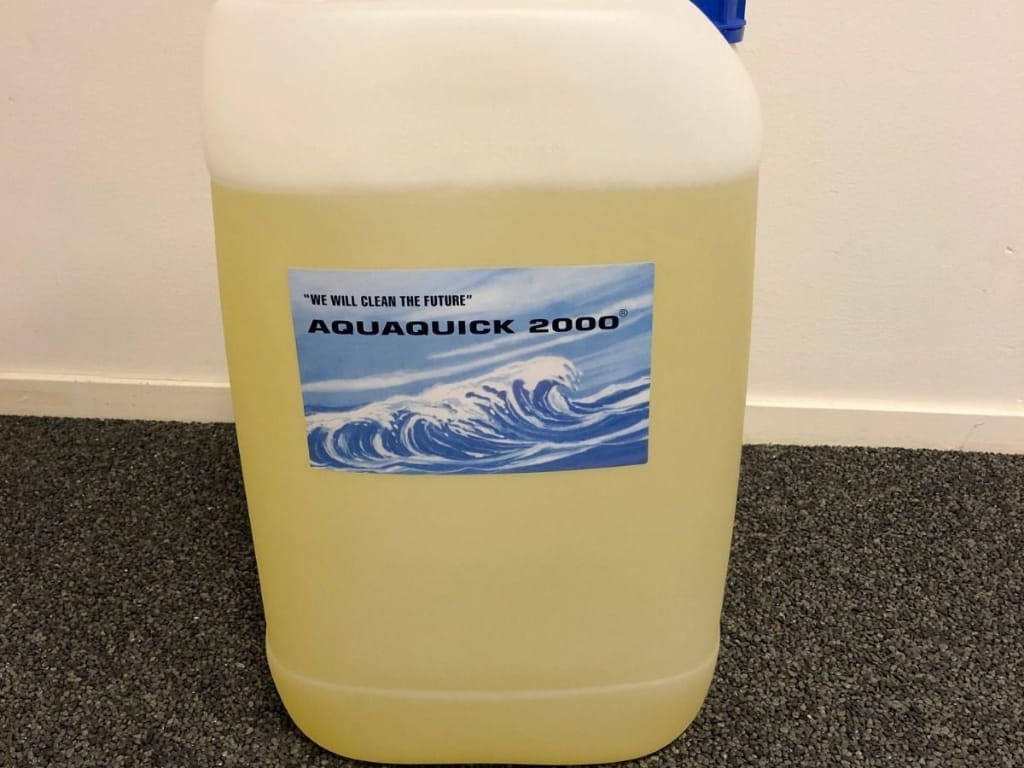
Jak skutecznie używać środków do odtłuszczania zbiorników oleju?
Skuteczne odtłuszczanie zbiornika oleju wymaga starannego przygotowania, zastosowania i procedur czyszczenia. Oto przewodnik krok po kroku:
Przygotowanie zbiornika
- Spuść resztki oleju lub paliwa ze zbiornika.
- Przewietrzyć obszar, aby zminimalizować narażenie na opary.
- Nosić odpowiedni sprzęt ochronny, taki jak rękawice i okulary ochronne.
Metody aplikacji
- Postępuj zgodnie z instrukcjami producenta dotyczącymi rozcieńczania lub stosowania odtłuszczacza.
- Użyj spryskiwacza, pędzla lub szmatki, aby równomiernie nanieść środek odtłuszczający na powierzchnie zbiornika.
- Zapewnić dokładne pokrycie wszystkich obszarów, na których gromadzi się smar.
Środki bezpieczeństwa podczas aplikacji
- Unikać bezpośredniego kontaktu z odtłuszczaczem i oparami.
- Pracować w dobrze wentylowanym miejscu lub w razie potrzeby stosować środki ochrony dróg oddechowych.
- Źródła zapłonu należy trzymać z dala od miejsca pracy, aby zapobiec zagrożeniu pożarowemu.
Proces czyszczenia i płukania
- Pozostawić środek odtłuszczający na powierzchni zbiornika przez zalecany czas.
- Użyj myjki ciśnieniowej lub węża, aby dokładnie spłukać odtłuszczacz i rozpuszczony smar.
- W razie potrzeby powtórzyć proces czyszczenia, aby osiągnąć pożądane rezultaty.
Kontrola po czyszczeniu
- Sprawdzić powierzchnie zbiornika pod kątem pozostałości smaru lub oleju.
- Popraw obszary, które wymagają dodatkowego czyszczenia lub obróbki punktowej.
- Resztki środka odtłuszczającego i materiałów czyszczących należy utylizować w odpowiedni sposób.
Wskazówki dotyczące konserwacji zbiorników oleju
Regularna konserwacja jest niezbędna, aby przedłużyć żywotność zbiorników oleju i zapobiec kosztownym naprawom lub wymianom. Oto kilka wskazówek dotyczących konserwacji, które pozwolą utrzymać zbiornik oleju w optymalnym stanie:
Harmonogram regularnych inspekcji
- Wdrożenie rutynowego harmonogramu inspekcji w celu sprawdzenia oznak korozji, wycieków lub uszkodzeń.
- Sprawdzić elementy zbiornika, takie jak zawory, złączki i uszczelki pod kątem zużycia lub pogorszenia stanu.
- Regularnie monitoruj poziom oleju, aby upewnić się, że nie przekracza on pojemności zbiornika.
Środki zapobiegawcze ograniczające gromadzenie się smaru
- Utrzymuj otaczający obszar w czystości i wolny od zanieczyszczeń, aby zapobiec przedostawaniu się zanieczyszczeń do zbiornika.
- Zainstaluj filtry lub separatory, aby wychwytywać tłuszcz i olej, zanim dostaną się do zbiornika.
- Używać materiałów pochłaniających lub urządzeń zapobiegających wyciekom, aby powstrzymać wycieki i zapobiec ich przedostaniu się do zbiornika.
Rozwiązywanie typowych problemów
- Drobne nieszczelności lub pęknięcia należy usuwać niezwłocznie, aby zapobiec ich pogłębianiu się w miarę upływu czasu.
- W razie potrzeby wymień zużyte lub uszkodzone elementy, takie jak uszczelki, uszczelnienia lub złącza.
- Skonsultuj się z profesjonalnym technikiem w przypadku skomplikowanych napraw lub problemów wykraczających poza Twoją wiedzę.
Długoterminowe strategie konserwacji
- Rozważ zastosowanie powłok ochronnych lub wykładzin wewnątrz zbiornika, aby zapobiec korozji.
- Wdrożenie programu konserwacji zbiornika, który obejmuje regularne czyszczenie i inspekcje przeprowadzane przez przeszkolonych specjalistów.
- Należy prowadzić szczegółową dokumentację czynności konserwacyjnych, napraw i inspekcji w celu wykorzystania jej w przyszłości.
Postępując zgodnie z poniższymi wskazówkami dotyczącymi konserwacji, można zapewnić długowieczność i niezawodność zbiornika oleju, jednocześnie minimalizując ryzyko kosztownych napraw lub zagrożeń dla środowiska.

Uwagi dotyczące środowiska i bezpieczeństwa
Prawidłowa utylizacja zużytych środków odtłuszczających i czyszczących ma kluczowe znaczenie dla zapobiegania skażeniu środowiska i zachowania zgodności z przepisami. Oto kilka kwestii dotyczących środowiska i bezpieczeństwa, o których należy pamiętać:
Utylizacja zużytego odtłuszczacza
- Zużyte środki odtłuszczające należy utylizować zgodnie z lokalnymi przepisami i wytycznymi.
- Unikaj wyrzucania środków odtłuszczających do kanalizacji, ponieważ mogą one zanieczyścić źródła wody.
- Rozważ recykling lub ponowne użycie pojemników ze środkiem odtłuszczającym, aby zminimalizować ilość odpadów.
Wpływ różnych odtłuszczaczy na środowisko
- W miarę możliwości wybieraj środki odtłuszczające, które ulegają biodegradacji i są przyjazne dla środowiska.
- Zminimalizowanie użycia odtłuszczaczy na bazie rozpuszczalników w celu zmniejszenia zanieczyszczenia powietrza i wody.
- Postępuj zgodnie z najlepszymi praktykami dotyczącymi obsługi i przechowywania środków odtłuszczających, aby zapobiec przypadkowym wyciekom lub uwolnieniom.
Środki ostrożności dotyczące obchodzenia się ze środkami odtłuszczającymi i ich przechowywania
- Odtłuszczacze należy przechowywać w dobrze wentylowanych miejscach, z dala od źródeł ciepła, iskier i otwartego ognia.
- Odtłuszczacze należy przechowywać poza zasięgiem dzieci i zwierząt domowych, aby zapobiec przypadkowemu połknięciu lub narażeniu.
- Podczas pracy ze środkami odtłuszczającymi należy stosować odpowiednie środki ochrony osobistej, takie jak rękawice i okulary ochronne.
Uwzględniając te kwestie środowiskowe i bezpieczeństwa w rutynowej konserwacji zbiorników oleju, można zminimalizować wpływ na środowisko i zapewnić bezpieczeństwo sobie i innym.
Studia przypadków: Rzeczywiste przykłady czyszczenia zbiorników oleju
Studia przypadków z życia wzięte zapewniają cenny wgląd w wyzwania i rozwiązania związane z czyszczeniem zbiorników oleju. Oto kilka przykładów:
Przemysłowe zbiorniki oleju
- Studium przypadku: Zakład produkcyjny stanął w obliczu wyzwań związanych z gromadzeniem się smaru w zbiornikach oleju przemysłowego, co prowadziło do zmniejszenia wydajności i zwiększenia kosztów konserwacji. Dzięki wdrożeniu regularnego harmonogramu czyszczenia i konserwacji przy użyciu odtłuszczacza na bazie wody, zakład był w stanie poprawić wydajność zbiorników i skrócić czas przestojów.
Mieszkaniowe zbiorniki oleju
- Studium przypadku: Właściciel domu odkrył niewielki wyciek w swoim domowym zbiorniku oleju, powodujący przedostawanie się oleju do otaczającej gleby. Po usunięciu wycieku i wyczyszczeniu zbiornika biodegradowalnym środkiem odtłuszczającym, właściciel domu zainstalował dodatkowy system zabezpieczający, aby zapobiec przyszłym wyciekom i zminimalizować wpływ na środowisko.
Komercyjne zbiorniki na olej
- Studium przypadku: Właściciel nieruchomości komercyjnej musiał wyczyścić i zlikwidować kilka podziemnych zbiorników oleju, aby zachować zgodność z przepisami dotyczącymi ochrony środowiska. Używając kombinacji odtłuszczaczy na bazie rozpuszczalników i biodegradowalnych, zbiorniki zostały dokładnie wyczyszczone, a wszelkie pozostałości oleju zostały odpowiednio zutylizowane. Nieruchomość została następnie przeznaczona pod nowy projekt deweloperski.
Te studia przypadków podkreślają znaczenie właściwej konserwacji zbiorników oleju i rolę skutecznych środków odtłuszczających w osiąganiu czystych i zgodnych z przepisami systemów magazynowania.
Przyszłe trendy w odtłuszczaniu zbiorników oleju
Postęp technologiczny i inicjatywy na rzecz zrównoważonego rozwoju napędzają przyszłe trendy w odtłuszczaniu zbiorników oleju. Oto kilka zmian, na które warto zwrócić uwagę:

Postępy w technologii odtłuszczania
- Ciągłe prace badawczo-rozwojowe koncentrują się na tworzeniu bardziej skutecznych i przyjaznych dla środowiska formuł odtłuszczaczy.
- Innowacje, takie jak nanoemulsje i mikroorganizmy, są badane w celu zwiększenia wydajności odtłuszczacza i zmniejszenia wpływu na środowisko.
Inicjatywy na rzecz zrównoważonego rozwoju w branży
- Firmy coraz częściej stosują zrównoważone praktyki i poszukują ekologicznych alternatyw dla czyszczenia zbiorników oleju.
- Inicjatywy takie jak recykling zużytych odtłuszczaczy, redukcja odpadów opakowaniowych i promowanie produktów biodegradowalnych stają się coraz bardziej powszechne.
Przewidywania dotyczące przyszłości konserwacji zbiorników ropy naftowej
- Oczekuje się, że przyszłość konserwacji zbiorników ropy naftowej będzie charakteryzować się zwiększoną automatyzacją, zdalnym monitorowaniem i technologiami konserwacji predykcyjnej.
- Systemy monitorowania w czasie rzeczywistym i technologie oparte na czujnikach umożliwią proaktywną identyfikację problemów i optymalizację harmonogramów konserwacji.
Przyjmując te przyszłe trendy, branża konserwacji zbiorników oleju może stać się bardziej wydajna, zrównoważona i odpowiedzialna za środowisko.
Wnioski
Podsumowując, wybór najlepszego środka do odtłuszczania zbiorników oleju wymaga starannego rozważenia czynników takich jak skuteczność, bezpieczeństwo i wpływ na środowisko. Rozumiejąc różne rodzaje dostępnych środków odtłuszczających, wdrażając skuteczne techniki czyszczenia i traktując priorytetowo kwestie ochrony środowiska i bezpieczeństwa, można zapewnić czystość i funkcjonalność zbiorników oleju przez wiele lat. Pamiętaj, aby być na bieżąco z przyszłymi trendami i postępami w konserwacji zbiorników oleju, aby wyprzedzić konkurencję i zminimalizować wpływ na środowisko.



